Under the blue sea, colorful "stone flowers" bloom. Colorful tropical fish happily shuttle back and forth among the stone flowers, roaming up and down. Clusters of red, green, and white "stone flowers" complement each other with schools of red and purple fish. This is both a beautiful and moving picture and a tribute to marine life. People are no strangers to tropical fish, because many people, although they have never been to tropical oceans, can appreciate the gorgeous grace of tropical fish in the fish tank at home. However, only a few people have witnessed the beauty of "stone flowers" on the seabed. The life experience of "Shihua" is also unfamiliar to many people. The scientific name of "Stone Flower" is coral. It is a higher-level coelenterate, an immobile animal that grows in the ocean.
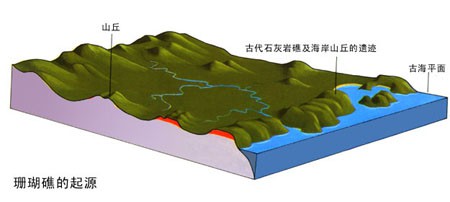
Changes of the Coral Reef Coast-Ancient Coral Reef Coast
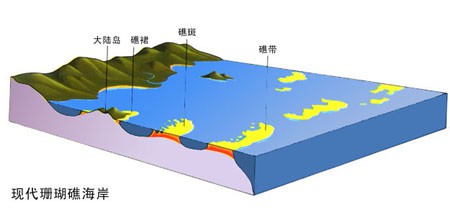
Changes of the Coral Reef Coastb Modern Coral Reef Coast
Corals have strict requirements on where they grow. The most suitable seawater temperature for growth must be above 20°C. It is very clean and intolerant of unclean sea water. It is neither salt-loving nor salty, and requires the salinity of seawater to be kept at around 35‰. It likes fresh and abundant oxygen in seawater. It grows no deeper than 40-60 meters. If the above conditions are not met, it will not be able to survive. If the original comfortable living environment deteriorates, he will fight to the death. He really has the spirit of "I would rather live in pieces than in ruins." At the mouth of the river, due to the intrusion of fresh water and sediment, there are no coral reef groups growing there. In bays where the water is too calm, coral colonies grow very slowly and are dying due to insufficient oxygen. Because corals have strict requirements for growth conditions, corals can only grow in tropical and subtropical sea areas that have the required conditions, as well as in temperate areas affected by warm currents. Therefore, the coral growth boundary is mainly in the sea area between 28 degrees south latitude and 28 degrees north latitude on both sides of the equator.
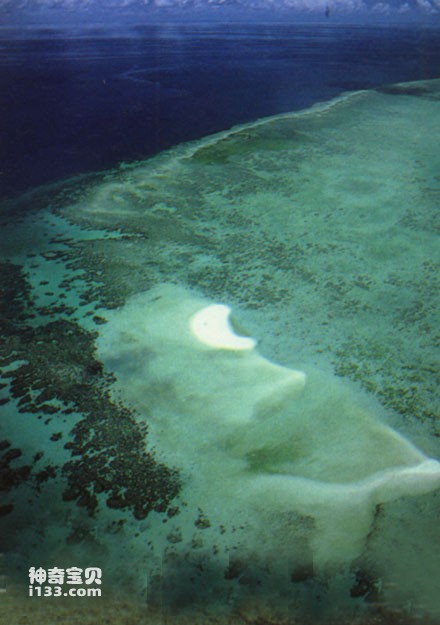
Great Barrier Reef Coast
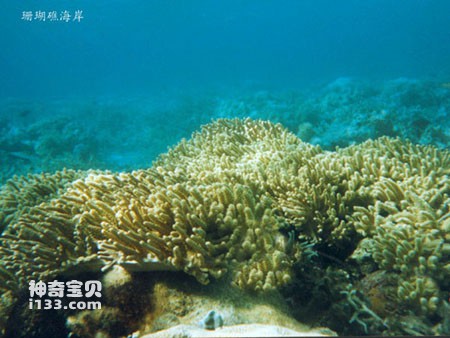
Colorful coral reef
Many dead reef-building coral skeletons are cemented together with some shells and calcareous algae to form a large calcareous rock mass with pores, which is as hard as a reef, so it is called a coral reef. The nearshore coral reefs formed in shallow water form a beautiful coral reef coast. Coral reef coast is one of the important types of coasts in my country. Coral reefs are widely developed in some coastal areas of Guangdong, Guangxi, Taiwan and Hainan south of the Taiwan Strait, as well as in Dongsha, Xisha, Zhongsha and Nansha Islands. Tropical fish among corals
From the perspective of rock characteristics, coral reefs can be divided into two types: coral reef limestone and coral clastic rock. The former is a huge coral reef group that has been accumulated into reefs in its native place without being transported. The latter is when the original reef or reef-building coral skeleton is destroyed, and its fragments and debris are transported to other places and then sedimented to consolidate into a reef. During the formation of coral debris, there are some complete shells and fragments, calcareous seaweed, and even some gravels of different lithologies and sizes mixed in. Therefore, the composition of coral debris rock is relatively complex, unlike coral reefs. Limestone is so single.
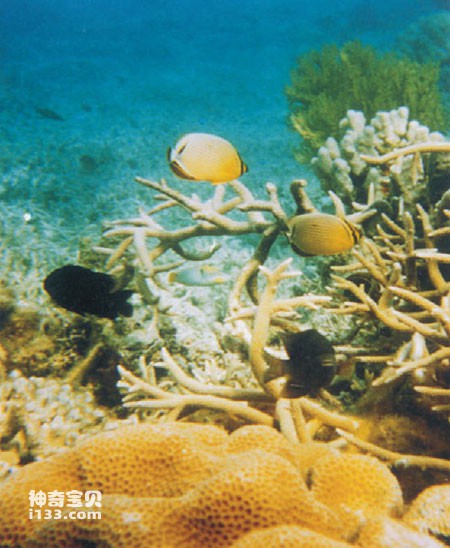
Beautiful coral coast
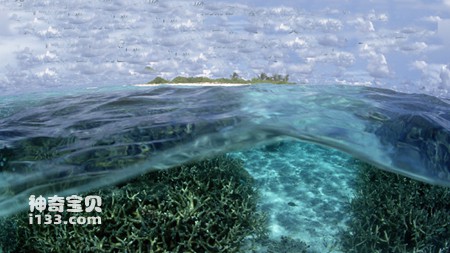
The main component of some coral reefs is not coral skeleton, but is composed mainly of many other types of calcium-containing animal shells and granular detritus of plants that live on the reef. Coral reefs in the Caribbean are mainly composed of calcareous algae, which gives people a deeper understanding of coral reefs.
Coral reefs form a unique coral reef coast. So, where are their roots? Coral reefs are not trees without roots, they also need a place to stay. The coral reefs on the north and west coast of Hainan Island are mostly fixed on the basalt on the seabed. Rocks are the best anchorage for coral reefs. In addition to rocks, coral reefs can be built on fine sand and mud substrates. There are interlayers of mud and sand between the coral reef layers of Australia's Great Barrier Reef, and some coral reefs in Indonesia are formed on top of mud. Whether it is rock, fine sand or silt, it can hold up a beautiful "coral reef building".
animal tags:
We created this article in conjunction with AI technology, then made sure it was fact-checked and edited by a Animals Top editor.